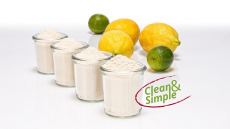Gleditsia triacanthos shows promise for new hydrocolloid
source of hydrocolloids for the food industry, says a new study
that investigated their functional properties depending on
extraction methods.
Gleditsia triacanthos, also known as the 'honey locust' is a tree that grows in the southern hemisphere.
Its legumes, which have a sweet pulp that can be fermented for beer, ripen in early winter (May to June).
The researchers from the Universidad Nacional de Cordoba in Argentina were aware of the hydrocolloid potential of the seeds, since they are a source of polysaccharides called galactomannans.
Other polysaccharide hydrocolloids used by the food industry are xanthan gum, carageenan, gum arabic, modified starches and pectin.
No hydrocolloid derived from G. triacanthos has been commercialized for the food industry to date however.
The functional properties of the galactomannans are depend on the ratio between mannose:galactose - and that ratio is dependent on the method of isolation and purification.
The researchers therefore set out to compare the composition and functional performance of three Gleditsia triacanthos extracts prepared using different methods.
One was treated with boiling water (M1); one was concentrated with boiling 2N sodium hydroxide (M2); and one was swelled with water, and the endosperm subsequently removed (M3).
The resulting hydrocolloids were then tested for water absorption capacity, solubility, apparent viscosity, emulsifying and foaming capacities, and their ability to impart stability to dispersions (foams and emulsions).
Their findings, which have been accepted for publication in the Elsevier journal Food Hydrocolloids , indicated that the M1 hydrocolloids showed the greatest potential for food use in terms of functionality across all these tests.
The researchers hypothesized that this functionality could be due to its high mannose:galactose ratio or protein content.
However the M1 method of extraction also produced the lowest yield of hydrocolloids.
"Considering the results obtained, we conclude that M1 is a potential additive for industries, particularly as an emulsifier, foam stabilizer and thickening agent in the food industry," they wrote in their conclusion.
Despite this, however, they said that further study is needed to find viable ways for the resource to be exploited for "a more demanding food industry" .
Source: Food Hydrocolloids (published online ahead of print) Doi: 10.1016/j.foodhyd.2008.02.011 "Chemical composition and functional properties of Gleditsia triacanthos Gum" Authors: L S Sciarini, F Maldonado, P D Ribotta, G T Pérez and A E Leon























